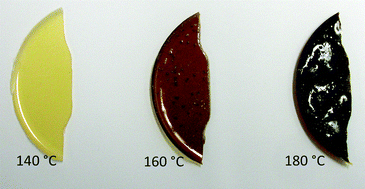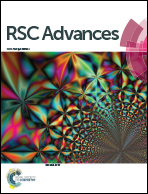Bio-based thermoset composites from epoxidised linseed oil and expanded starch†
Abstract
Bio-based thermoset composites comprising epoxidised linseed oil (ELO), a bio-derived diacid crosslinker (Pripol 1009) and starch are reported. High amylose corn starch in its native, gelatinised and retrograded forms were used in the formulation to yield water resistant films with good thermal stability. The textural properties of gelatinised and retrograded starches were characterised using scanning electron microscopy and porosimetry and their thermal stability was determined using thermogravimetric analysis. The inclusion of 20% gelatinised starch significantly improved the mechanical properties of the bio-based thermoset composite with tensile strength being enhanced by 227% and Young's modulus by 166% with respect to the starch-free counterparts. Unlike in formulations comprising native starch, no visible phase separation was noticed for gelatinised- or retrograded-starch thermosets. Thermal analysis and gel time study revealed retardation of the cure process in the presence of starch. However, the presence of hydroxyl groups within the starch was likely to promote a more extensive curing process, as indicated by the higher total enthalpy of reaction obtained. This was supported by thermal stability studies, which indicated a greater proportion of crosslinked material obtained in films with higher starch content.


 Please wait while we load your content...
Please wait while we load your content...